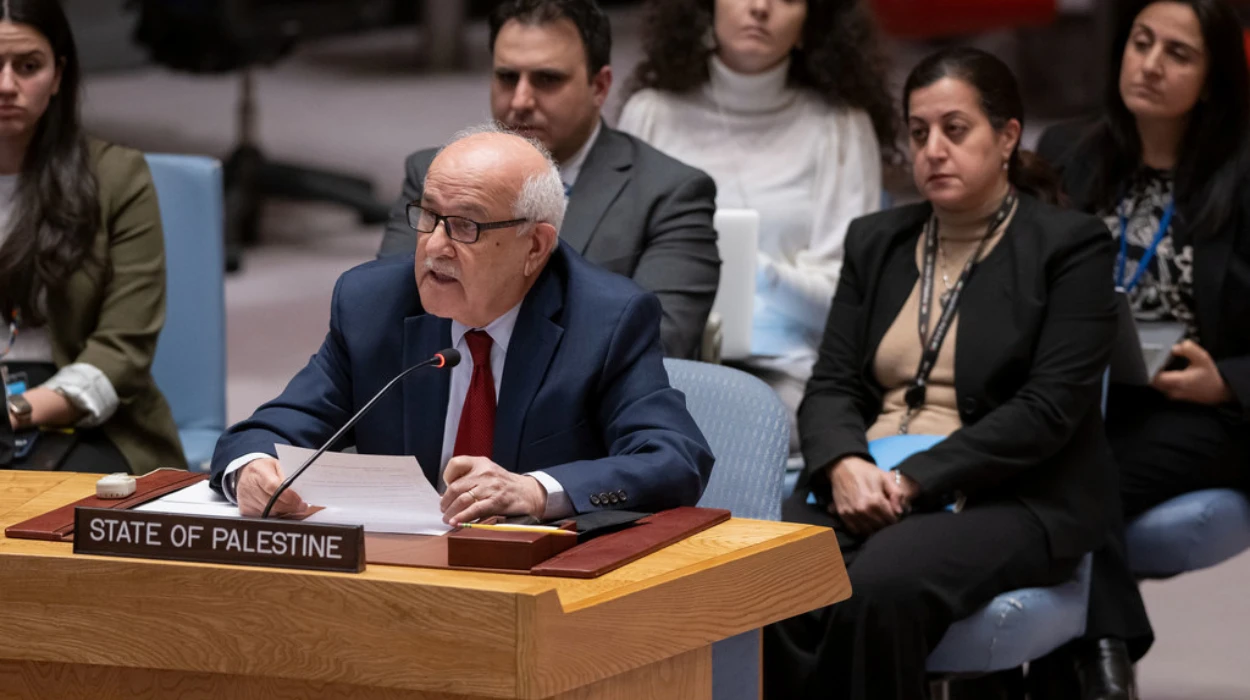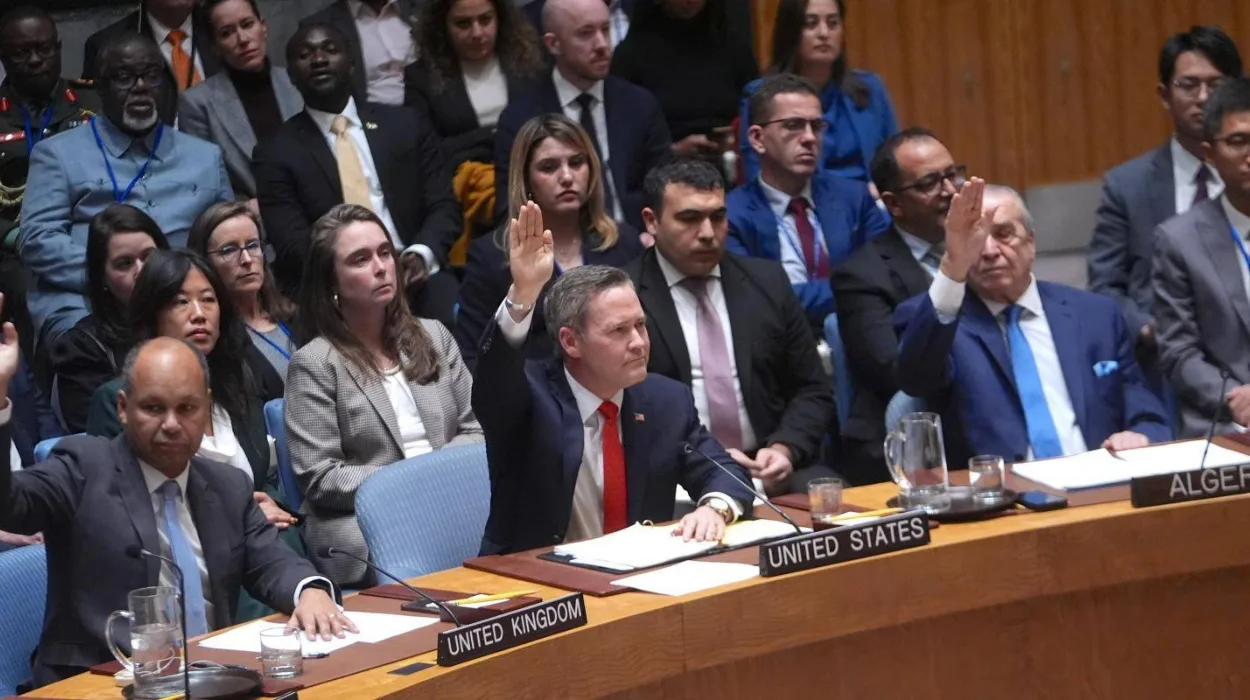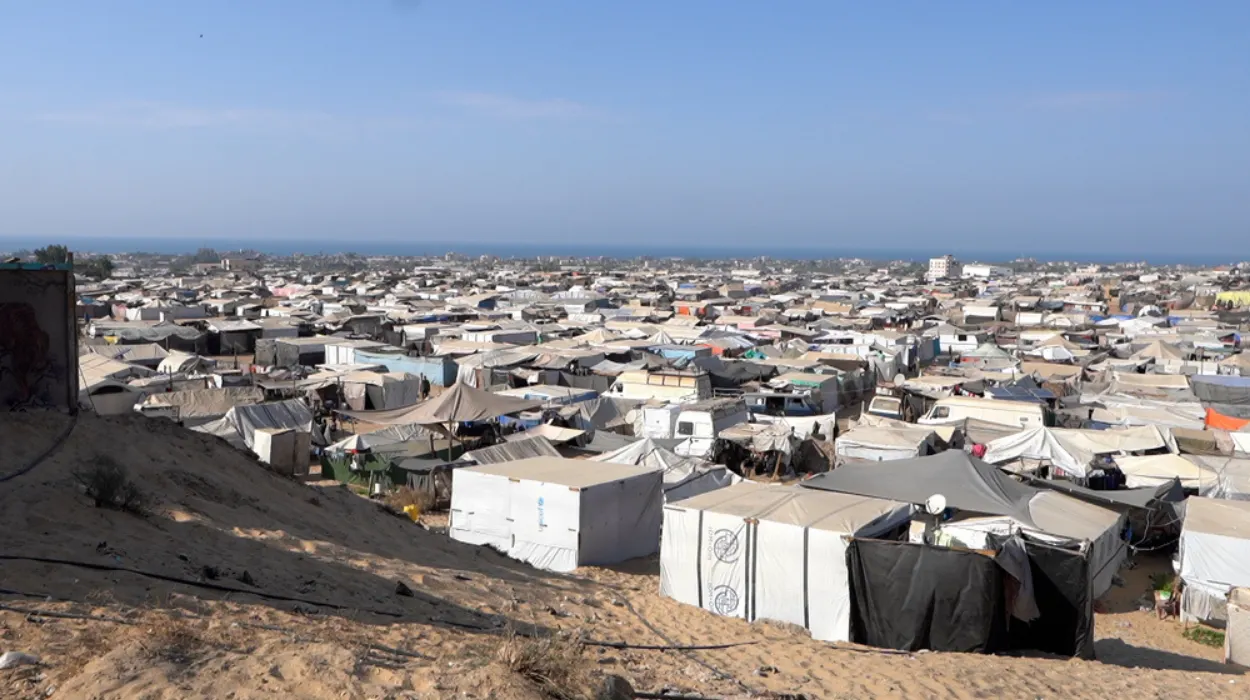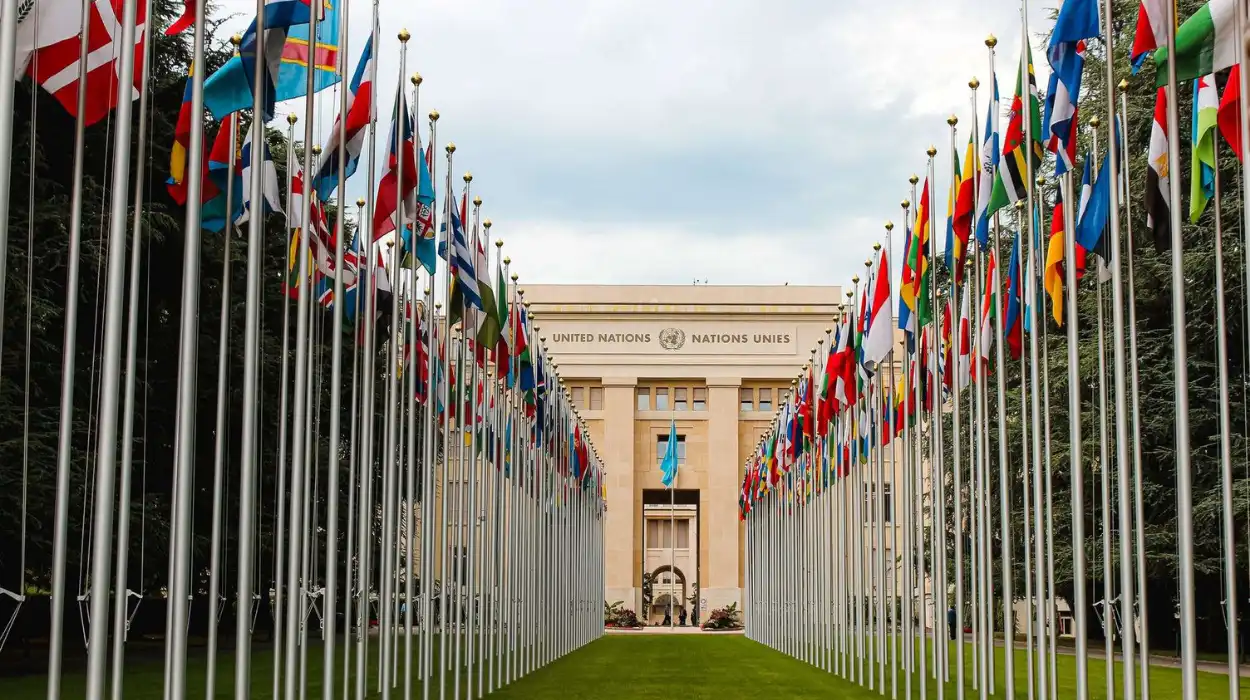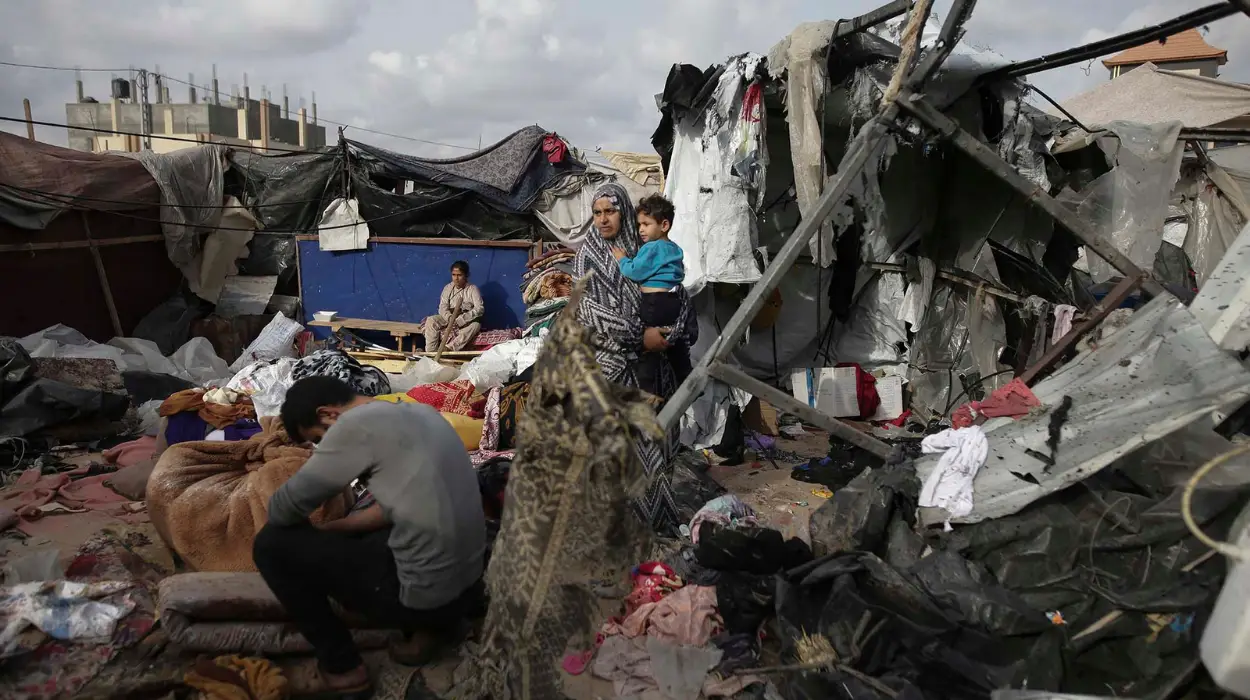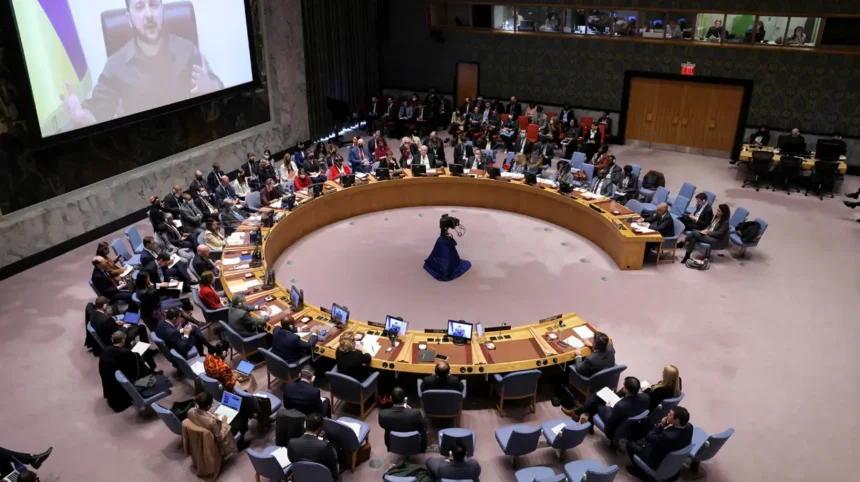It was the 9971 st meeting of the United Nations Security council, convened on August 1 2025, to discuss the fast deteriorating crisis in Ukraine. This meeting was presided by Panama, whose rotation president in the council is Jose Ra ul Mulino but was at a time when Russia had intensified attacks particularly in Kyiv and Kharkiv. Ukraine demanded that the ceasefire was unconditional and should be carried out immediately in order to save the lives of civilians and the sovereignty of a nation.
Although the majority of the Council members were concerned about an increasing violence rate, unity was non-existent. The United States and European powers urged a binding resolution that both sides end the conflict with a mandate issued to accomplish a ceasefire by August 8 which was dictated by United States officials due to the growing international pressure. The U.S. diplomats threatened further economic sanctions against the uncompromising Russia before meeting a deadline established on that date.
Russia in turn rejected such initiatives arguing that they were aimed at sabotaging its strategic interests. Russian delegates funneled their war as a war of national defense and were not guilty of aggression. This rigid stance hampered any agreement to take decisive action on the part of the Council thus illustrating the lineal shortcomings of the institution in mediating conflicts where there is direct involvement of a permanent member.
Balancing Diplomacy and Realpolitik
How the Council can handle such a conflict lies in the sense that there must be some sense of balance between the humanitarian urgency and the geopolitical reality. Although non-permanent members and the Western powers would often stress on the de-escalation and humanitarian access, Russia used its veto power to prevent any binding condemnation. Such continuing inability highlights the flaws of the existing veto framework in being prepared to face security threats when it comes to Council members.
The issue was supported further by humanitarian considerations that were at fever pitch due to deteriorating conditions in affected regions. UN officials and humanitarian agencies were pointing to the fact that civilian infrastructure is being destroyed, people are displaced in mass numbers, and there are more victims of this conflict. These warnings put additional pressure on pleas made to ceasefires and so-called safe corridors, even though, politically, practicality remained stalled.
Geopolitical Divides and the UNSC’s Efficacy
The East-West Divide
The rift between the west and Russia still characterizes the approach being taken by the UNSC in addressing the Ukraine conflict. The United States, the United Kingdom and other European countries have been vocal in the support of the sovereignty of Ukraine; however, even this concerted effort fails to deliver any binding decree against the Russian military action since Russia used its veto power to block such attempts.
This has attracted more critics that say that the council as it is in its present form is poorly positioned to deal with intra conflicts that involve major powers in the world. Russia has unerringly objected to any language portraying its activities as contravention of international law, and China has not uniformly supported any call to de-escalate, but has not advocated sanctions or condemnation.
The effect of this alignment is that it restricts the mandate of the Council to issuing statements that are non-binding and serve as debating stages instead of actionable outcomes. It brings out greater systemic concerns of the relevance of the Security Council in multipolar power structure and necessity of structural infrastructural changes introducing changes regarding the behavior of modern security threats.
A Strain on Multilateralism
The lack of success that the UNSC has had in finding a cohesive response to the war in Ukraine is representative of the pressure multilateral institutions are coming under. The Council’s performance since Russia’s 2022 invasion has been marked by stalemates, with resolutions blocked and humanitarian calls diluted by veto threats. By 2025, the predicament has only sharpened these polarities, especially since energy markets, refugee flows, along with international security posture have fallen victim to the war.
According to the indicators of the shift from the UN mechanism, diplomatic actors have increasingly resorted to parallel mechanisms either to supplement the UN efforts or exclusively to pursue peace proposals as in the case of G7, EU-led initiatives, and regional coalitions. The UNSC has lost much of its practical ability to act in this conflict, but its symbolic role cannot be dismissed yet.
The Humanitarian and Global Economic Dimensions
Humanitarian Crisis and Civilian Protection
On the ground, the civilian toll continues to mount. In the last two months, the UN estimates that more than 80,000 Ukrainians have been displaced by Russian progress in the east and south. The airstrikes that are being done indiscriminately have hit residential areas, schools and hospitals further exacerbating the situation. Such developments were time and again brought up in the Council meeting with many members strongly advocating the establishment of humanitarian corridors and free access of aid.
The United Nations Office of consolidation, humanitarian affairs added that unless ceasefires were declared with urgency, international relief agencies could not safely enter hard hit areas. However, the existence of protection mechanisms that can be enforced is still lacking, thus, leaving millions of people vulnerable, particularly in areas where communication infrastructure has been destroyed.
Broader Global Consequences
The global food markets have been still experiencing the impact of Ukraine interrupting its exports of grain. As one of the world’s leading suppliers of wheat and corn, Ukraine’s blocked ports and damaged storage facilities have contributed to price spikes in Africa and the Middle East. The food insecurity is worsening in places that were highly reliant on Ukrainian agriculture like Egypt and Lebanon.
The fact that the effects of stalled diplomacy at the Security Council extend far beyond regional borders is highlighted by the economic repercussions the war had on the world that was worsened by energy supply problems and inflationary pressures. There is a necessity of effective conflict resolution not only in the world but also in as far as small economies are concerned.
Political and Diplomatic Voices in Play
Various diplomatic policymakers put the August 1 meeting in the context of urgency. The U.S. and European officials stressed that contributions to the sovereignty of Ukraine were a moral and legal obligation, and going the other way would only weaken the violations of international law.
The representative of Ukraine urged Council members to understand the seriousness of the conflict and to consider Russian aggression as it is not just a bilateral issue but a threat to systemic danger to the rules-based international order. These sentiments were reinforced by Denmark and Estonia who wanted united diplomatic actions and requested that Russia put a pause to its missile strikes on civilian objects.
Russia’s Deputy Permanent Representative Dmitry Polykiy framed the conflict as a necessary act of self-defense, accusing Western countries of fueling escalation by arming Kyiv and dismissing peace initiatives proposed by Moscow. These positions remain firmly entrenched and continue to polarize debate within the Council.
This person has spoken on the topic and summarized the situation accordingly: Diplomatic researcher Lenka White pointed out on social media that the Security Council’s inability to act decisively on Ukraine “exposes a critical flaw in the international order—one where the veto of a single state outweighs collective humanitarian concern.” White’s assessment echoes growing criticism that institutional reform is needed to address today’s global security crises.
Navigating the Dispensing of Peace and the Prevention of Escalation
The UN Security Council remains a central but increasingly constrained forum in addressing the Ukraine crisis. Its symbolic weight and diplomatic visibility persist, but the deep-rooted geopolitical schisms among its permanent members prevent meaningful consensus on urgent issues of war and peace. The escalating violence and looming August 8 ceasefire deadline emphasize both the timeliness and the fragility of ongoing diplomatic efforts.
As the conflict’s impact radiates through international supply chains, global inflation, and humanitarian systems, pressure is building on multilateral institutions to reform or adapt. The Security Council’s performance in Ukraine may ultimately serve as a benchmark for future crises: whether it can act as a stabilizing force or is limited to reactive diplomacy and fragmented response.
The extent to which the Council can navigate these cross-pressures—preserving its foundational mandate while adapting to modern power dynamics—will shape not only the outcome of the Ukraine conflict, but the future credibility of international peacekeeping and conflict mediation as a whole.


